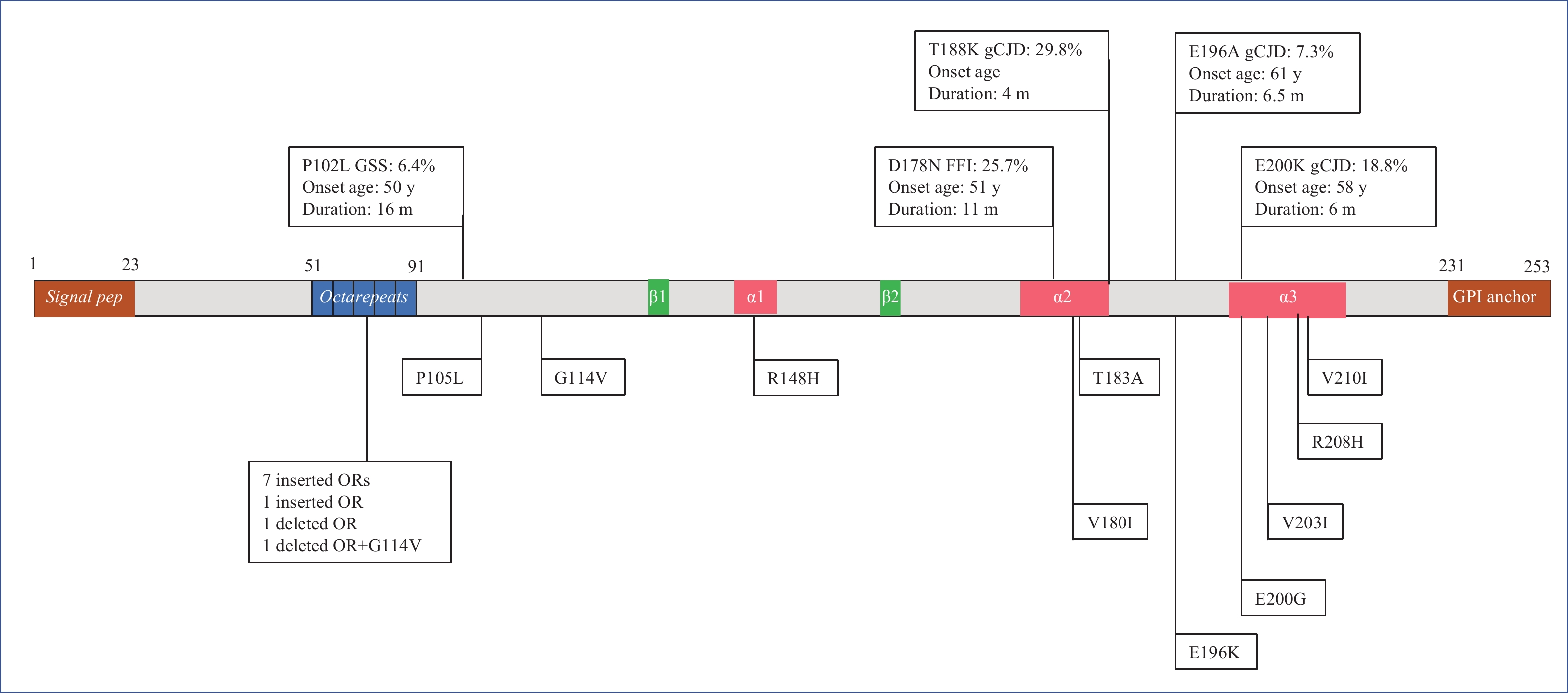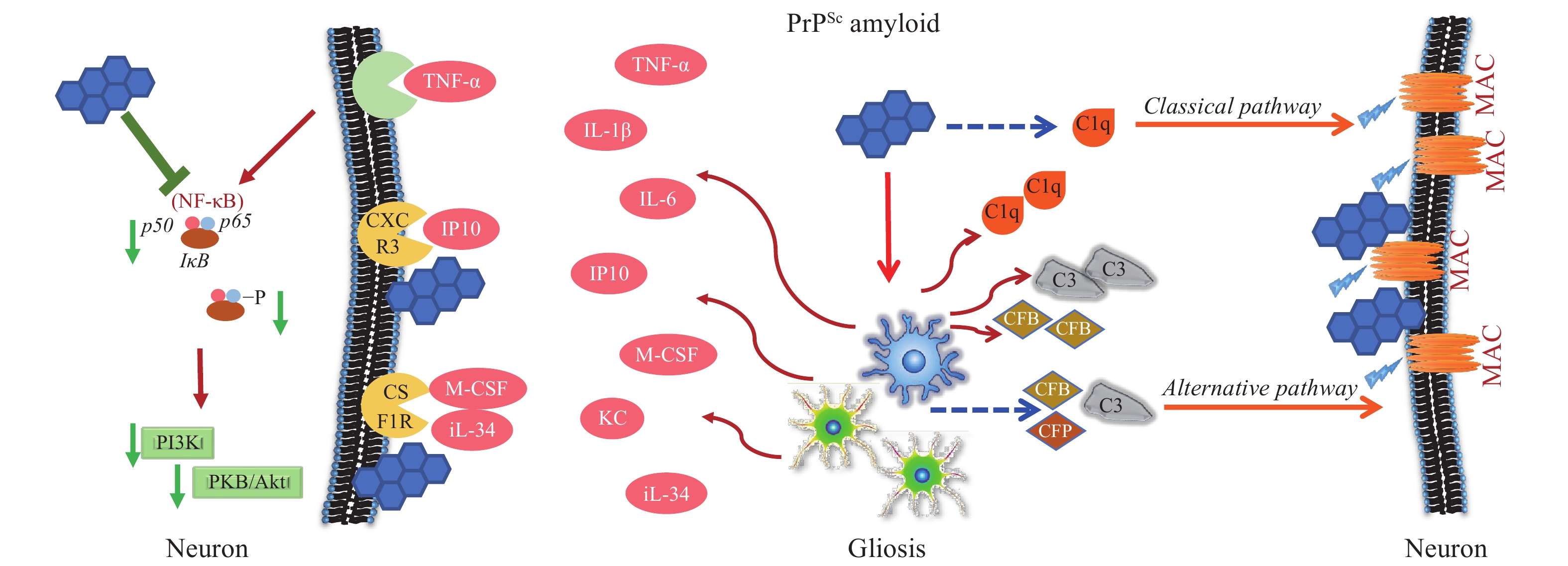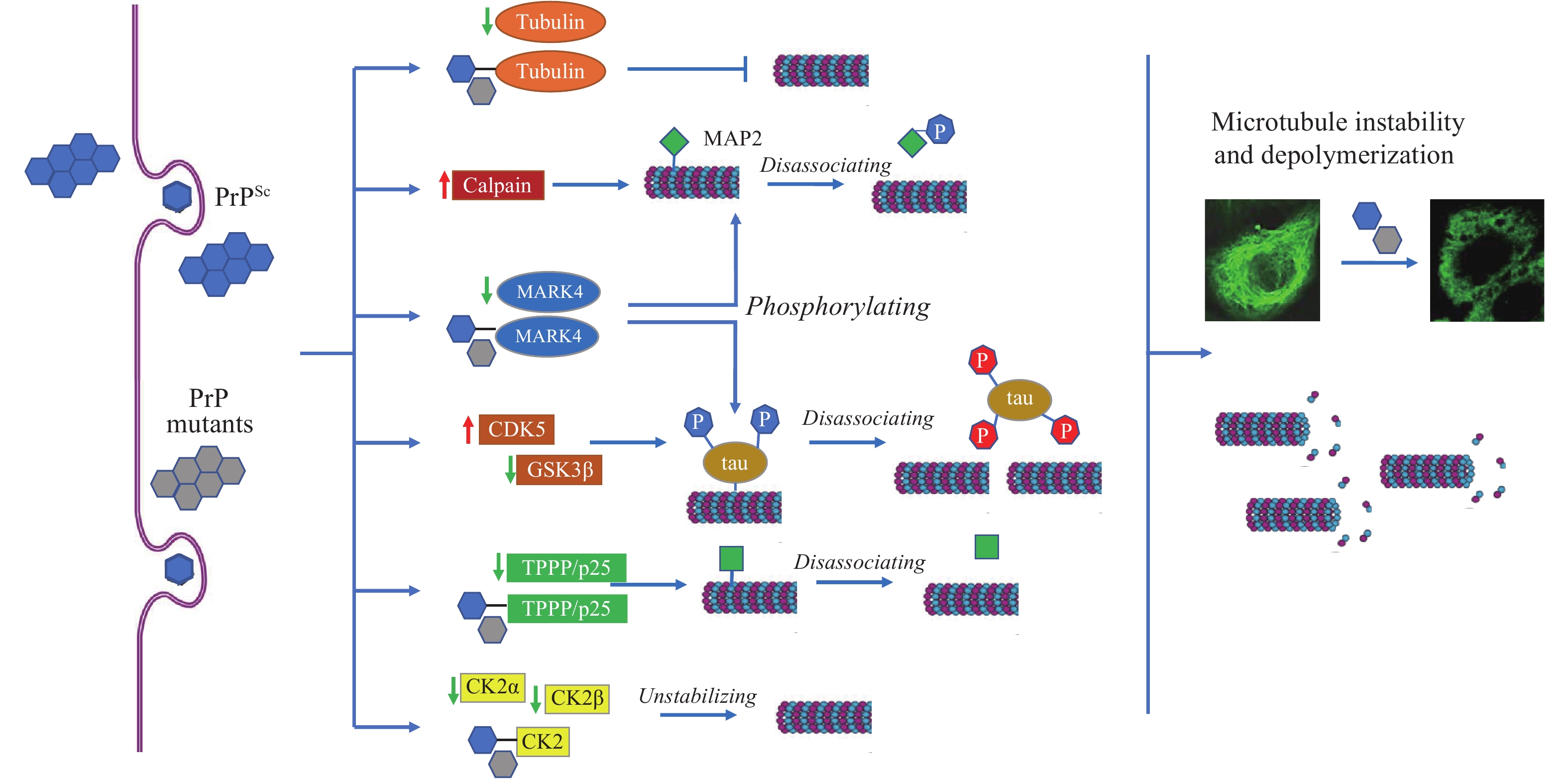2022 Vol. 4, No. 33
This report briefly described the establishment and implementation of national surveillance for human prion disease (PrD) in China. Reported cases came from Chinese surveillance network for PrD. Immunohistochemistry, Western blot, enzyme-linked immunosorbent assay (ELISA), Polymerase Chain Reaction (PCR), and real-time quaking-induced conversion (RT-QuIC) tests were used for the samples of brain, cerebrospinal fluid (CSF), and blood. Diagnosis standard for the PrDs is based on the National Commission of Health (WS/T 562-2017). The study summarized major epidemiological, clinical and laboratory features of more than 2,100 diagnosed different types of Chinese PrD cases. Sporadic Creutzfeldt-Jacob disease (sCJD) is the predominant type of PrD (88.7%). 19 different genotypes of genetic PrDs (gPrDs) were identified, accounting for about 11.3% of all PrDs, revealing ethno-relationships. No iatrogenic CJD (iCJD) and variant CJD (vCJD) was identified. The characteristics of different types of sCJD in China showed similar features as those reported globally, but gPrDs showed an obvious ethno-relationship.
The studies of prions and prion disease usually need many special platforms and techniques that differ from those for classical microbes. Search of new biomarkers and establishment of new methods for the diagnosis of human prion diseases are priorities in the field of prion study.
Unlike infectious diseases caused by conventional microbes, there are no detectable specific humoral or cellular immunoresponses to prion infection. However, extensive and active gliosis is observable in affected brain regions along with significant deposits of scrapie-like prion protein (PrPSc). Here, we summarize our studies of vibrant activation of host non-specific immune components and autophagy in the microenvironment of prion infected brains. Activation of the brain’s innate immunity and autophagy upon prion infection reflect non-specific host defense systems attempt to dispose of accumulated prions. Vibrant elevation of neuroinflammation leads to neuron injury.
The study describes some of the major findings of changes in intracellular components and biological pathways in the brain during prion infection and hypothesizes some important physiological and pathological approaches mainly based on our studies. Omics techniques analysis of messenger RNA (mRNA) and proteins were carried out in the study. Meanwhile, Western blot, immunohistochemistry, and immunofluorescence were used for protein analysis in different signaling pathways. Statistical analyses were used to describe the protein differences in signaling pathways of infected and normal samples. This report reviewed and summarized our studies on the aberrant changes in intracellular components and biological functions in the brains of prion disease (PrD). Omics analyses proposed extensive abnormal alterations of brain mRNAs transcriptions, protein expressions, and post-translational modifications. The molecular disturbances for microtubule instability and depolymerization, the dysregulations of different signals related with neuron loss and synaptic plasticity, the abnormalities of mitochondrial and endoplasmic reticulum stress, and disturbance of intracellular reactive oxygen species homeostasis during prion infection were precisely analyzed and reviewed. Aberrant disturbances of numerous biological molecules and signals in brain tissues were found during prion infection.



 Subscribe for E-mail Alerts
Subscribe for E-mail Alerts CCDC Weekly RSS Feed
CCDC Weekly RSS Feed


